When many of us think about Gilded Age fashions we think of over-the-top evening gowns, bustles, and pure opulence. While these types of styles may have dominated the fashion world of the early Gilded Age, by the end of the century an entirely new look was trending: tailored suits. Made for everything from walking to yachting, the shift allowed many women to embrace the independent aura of the New Woman.
There were four main aspects of a late Victorian tailored suit for day use: the shirtwaist, the full skirt, a fitted jacket, and pointed boots. The clothing items were brand new for use in a woman’s wardrobe yet once they appeared, things would never be the same.
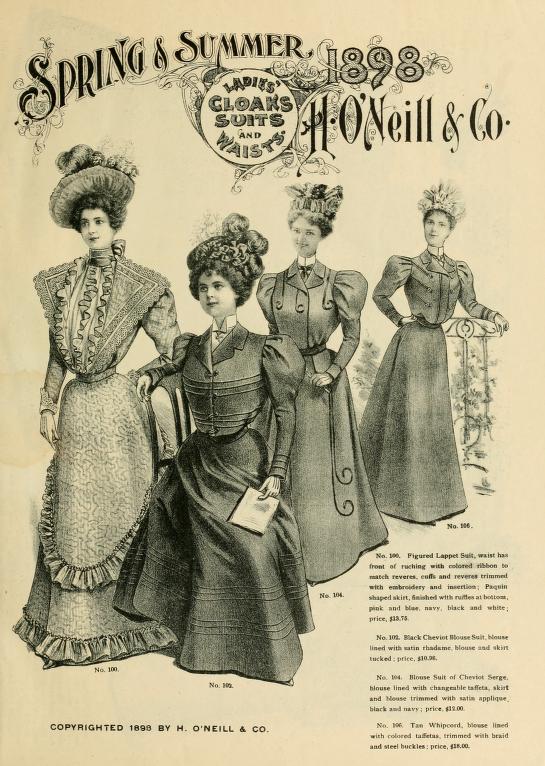
Shirtwaist
One of the most significant trends of the late 19th century was the emergence of the shirtwaist for widespread use among females. Its adaptation is an obvious result of the New Woman trend and the desire for more ease of movement. Mass manufacturing of ready-made clothing was made possible for the first time, also helping the trend take off quickly. Godey’s Lady’s Book wrote in an 1895 issue:
“The popularity of the shirt-wast is perhaps the most sensible fad that has ever been adopted. These waists are cool and convenient, besides being exceedingly trim. The broad, plaid shirt-waist is very popular this season, and when ade with a box-plait is very fetching. The latest fancy is of some delicate-colored percale; the collar, cuffs, and front hem are embroidered with some dainty little flower or figure.”
Shirt-waists of the 1890s were typically made with a loose bust and then tucked in tight at the waist, allowing for the top curve of the S-silhouette. The bodice was often trimmed vertically with lace, tucks, and other embellishments.
Two collars dominated the scene. First was the raised collar, rising up from buttons in the back and either covering just a few inches of a woman’s neck or resting just below the jawline.
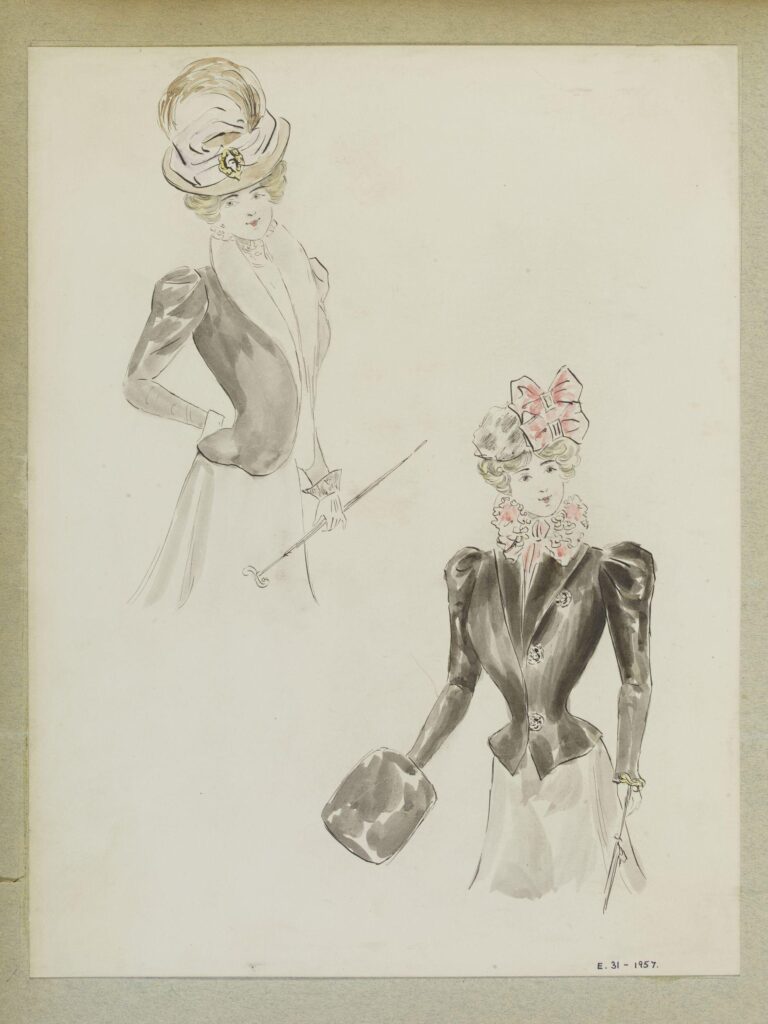

As the shirtwaist caught on for women the next trend was the classic folded down collar, taken from men’s fashions of the time. Along with this trend also emerged front button closures rather than back.
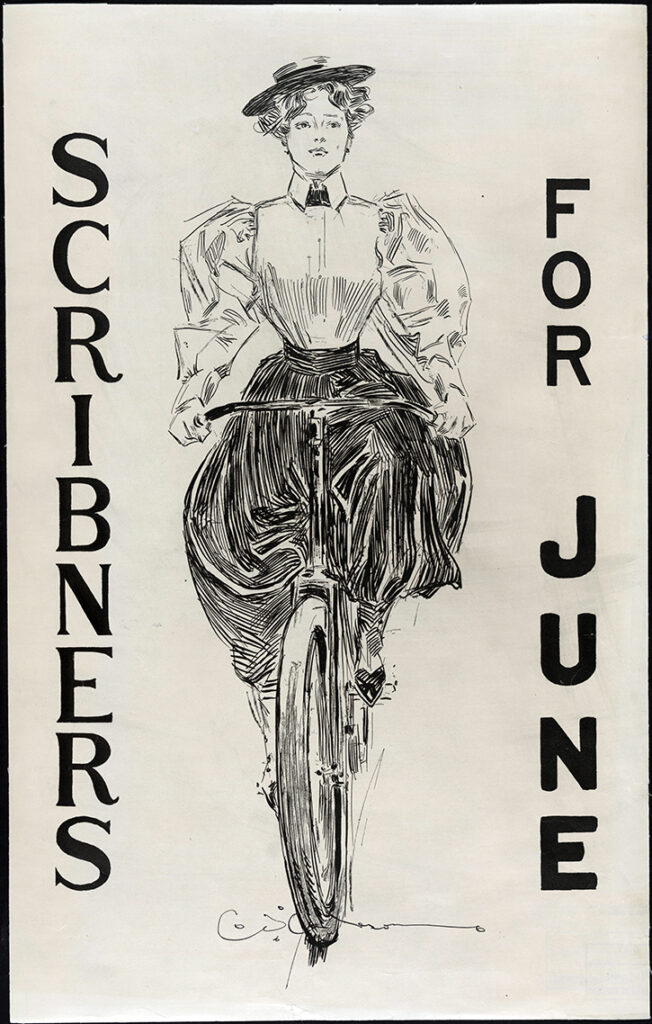
Sleeves
In short, sleeves were all over the place in the late Victorian era. The most notable trends were the puffed sleeve of the early 1890s and the leg o mutton sleeve of the mid-1890s. By the end of the decade, sleeves would largely land narrow and fitted to the arm.
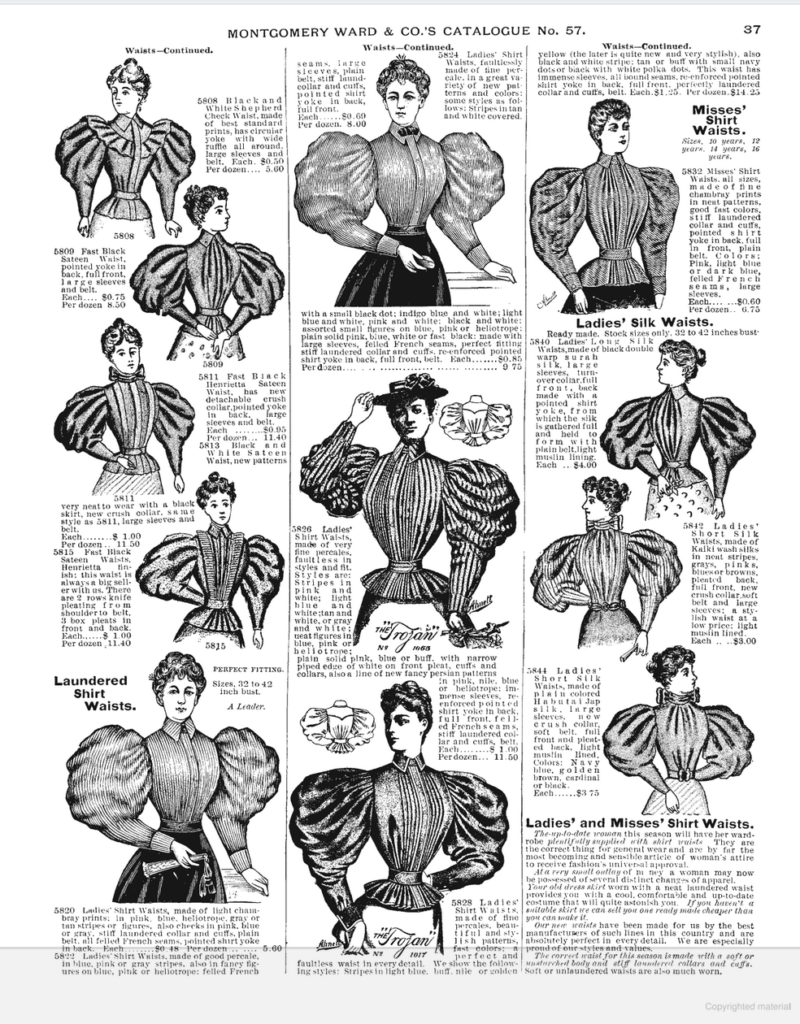
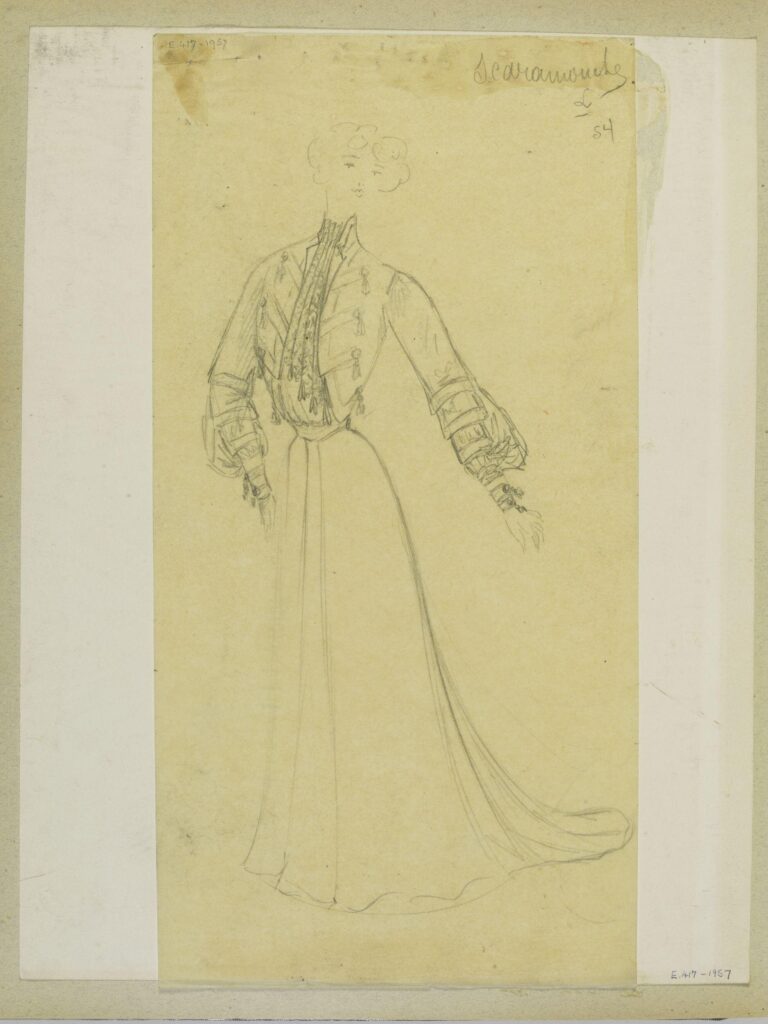
Coordinating skirts
Women’s suits of the late Gilded Age included a delightfully full skirt to pair with the tailored shirtwaist. Gone was the bustle or any embellishment in the back of the skirt, again to facilitate the desired curve.
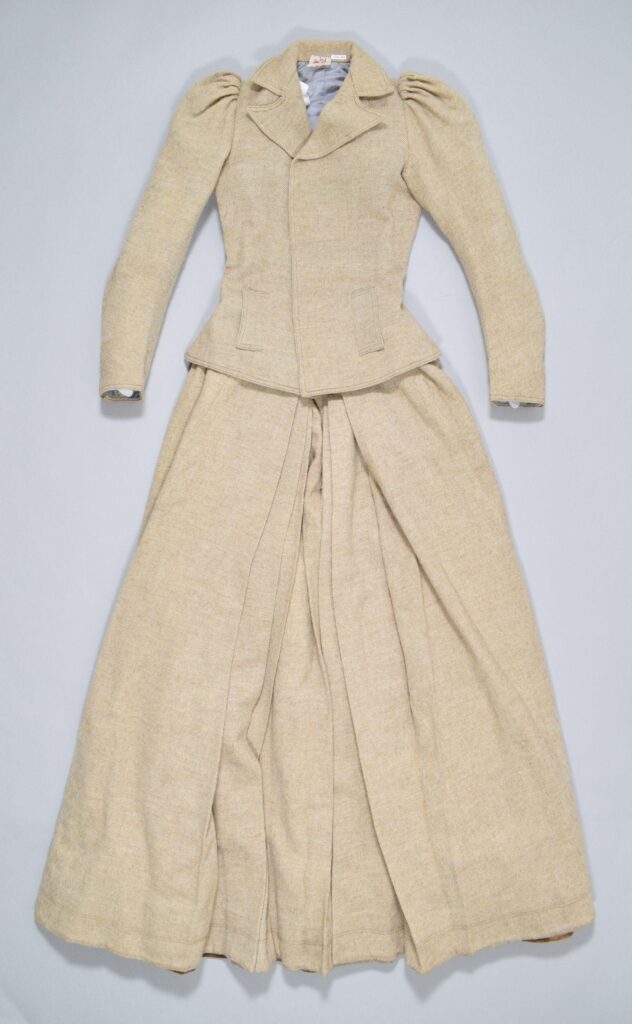
The fullness of women’s daily wear skirts is a great example of lifestyle trends impacting society, as they mimicked those being adapted for sports purposes, as we have seen with both the bicycle outfit and Victorian riding habits. Outfits for various sporting use skyrocketed in popularity and will be the topic of an upcoming post.
As I mentioned with the rise in popularity of shirtwaists, the Industrial Revolution played a large role in the popularity of such uniform trends. Tops and skirts were sold in department stores, advertised in mass media for the first time, and sold via mail-order catalogs such as Montgomery Ward and of course, Sears. The catalogs advertised the fact that their women’s suits were now cheaper to buy than to make, quite fitting for the New Woman.
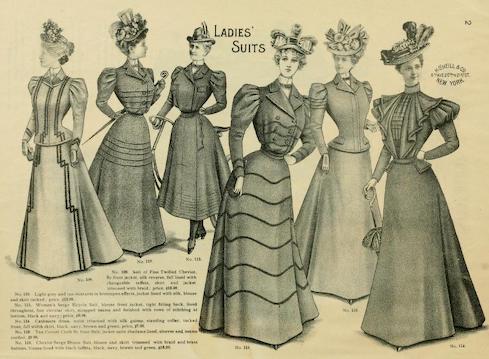
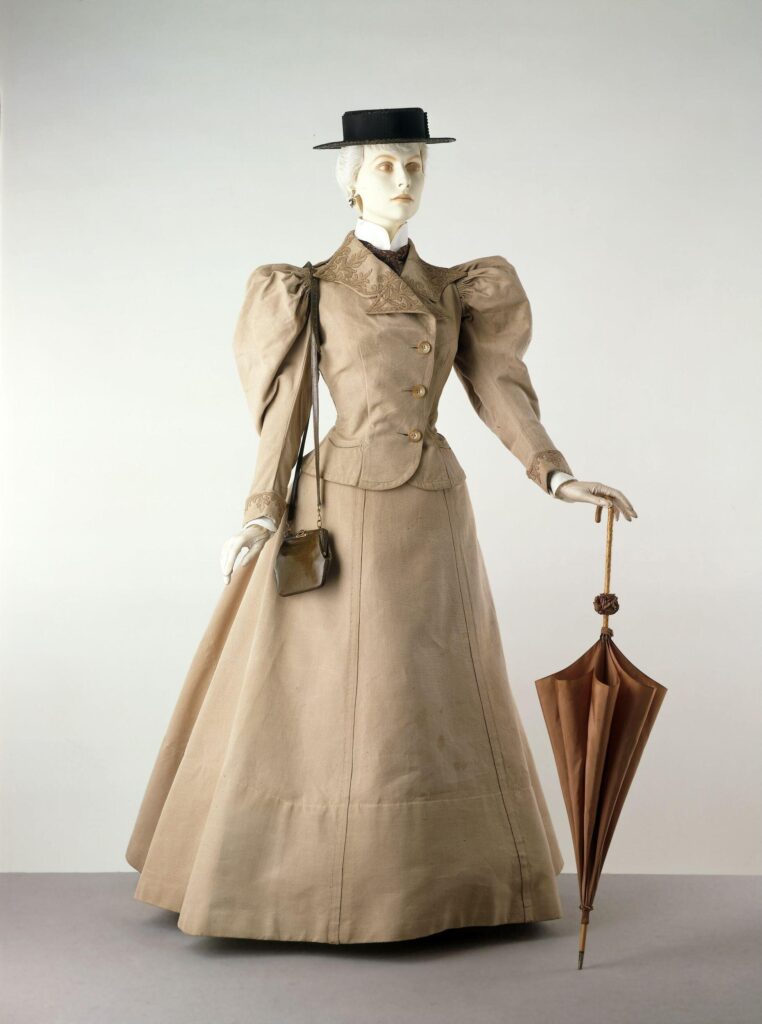
Fitted jackets
A fitted jacket completed a tailored suit for social use such as making visits or running errands. They were intricately designed and constructed, perhaps the finest so of the late Victorian tailored suits. They were also the aspect of the late Victorian tailored suit that I found the least amount of information about!
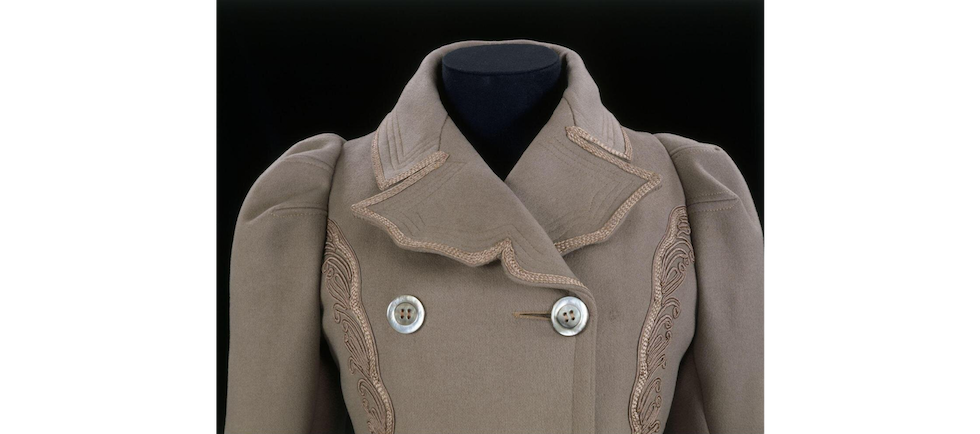

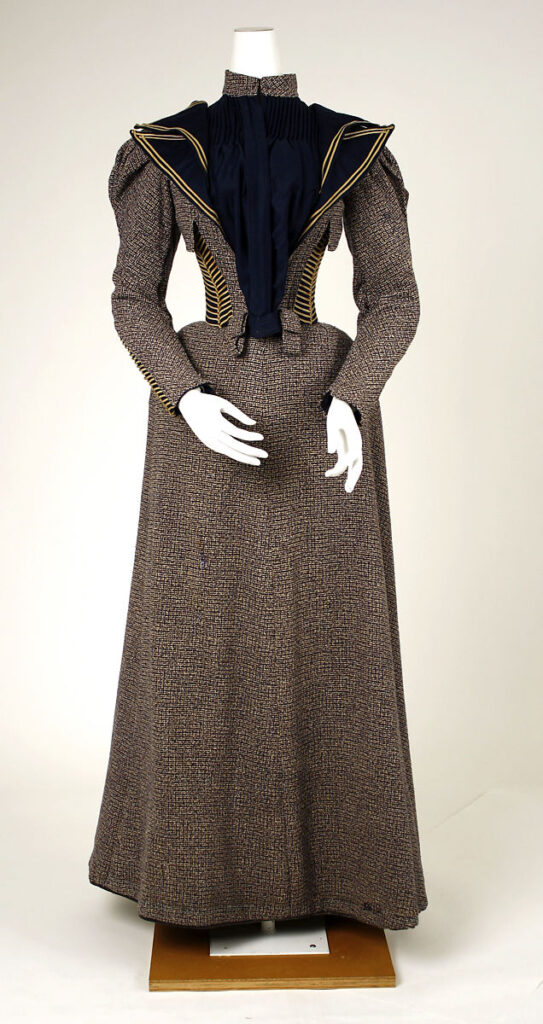
Create a New Woman look of your own
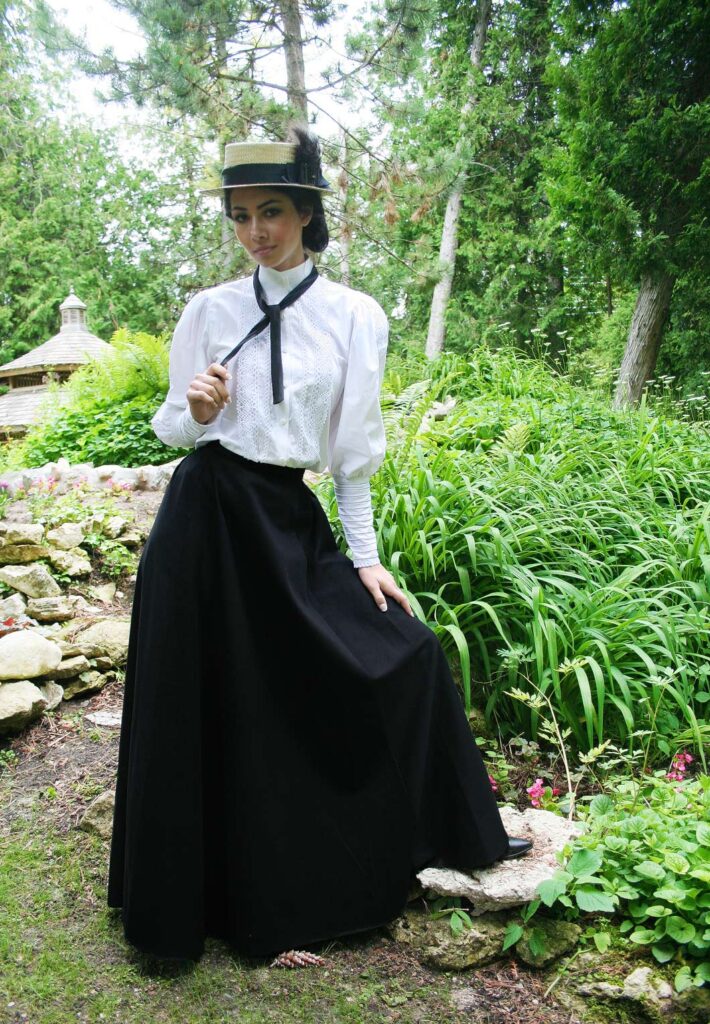
Victorian Twill Fan Skirt and Classic Victorian Blouse
More feminist fun:
The Victorian Croquet Craze: crazier than you think
Femininity in Question: Edwardian Depictions of the New Woman

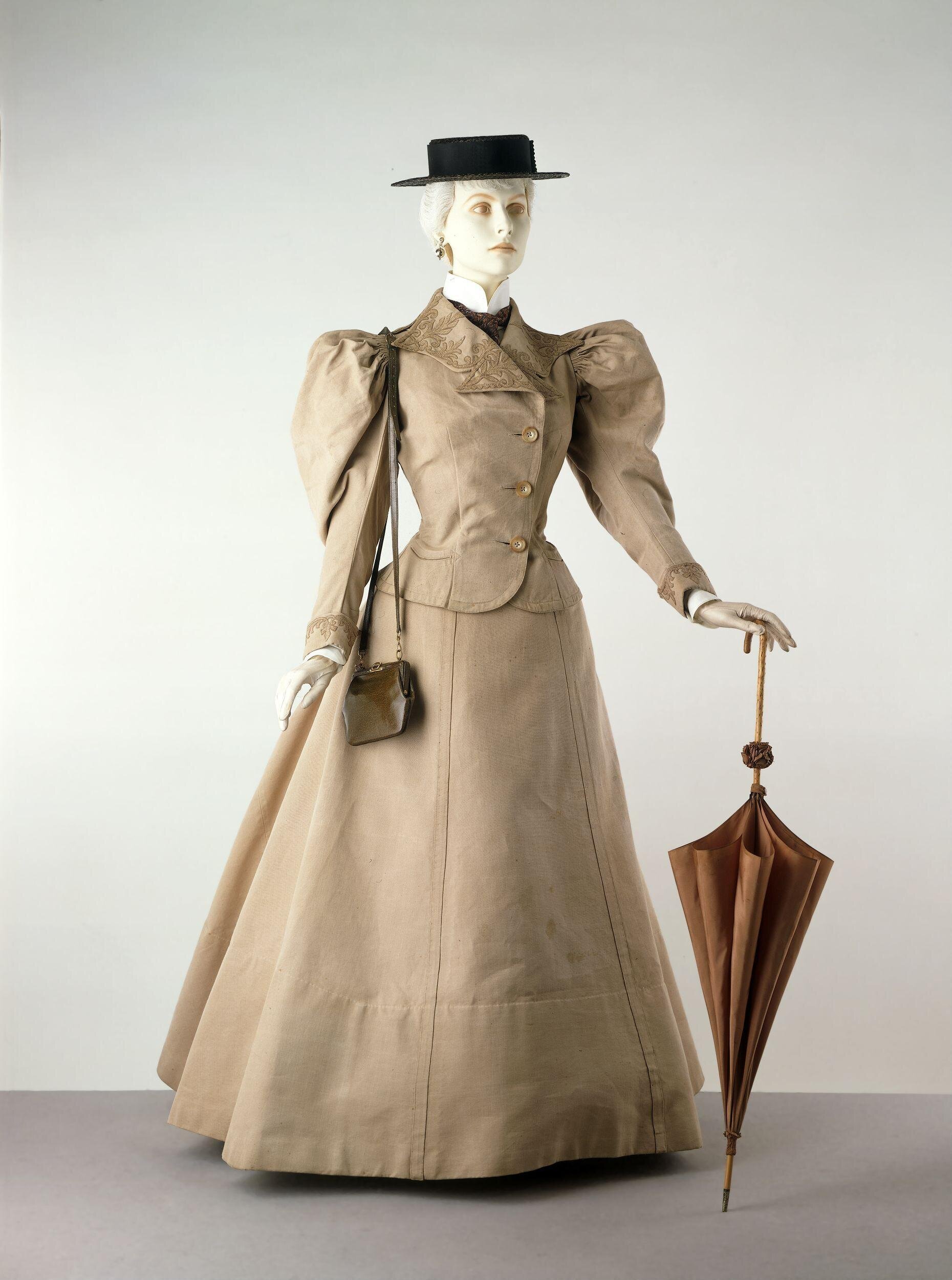












Leave A Comment